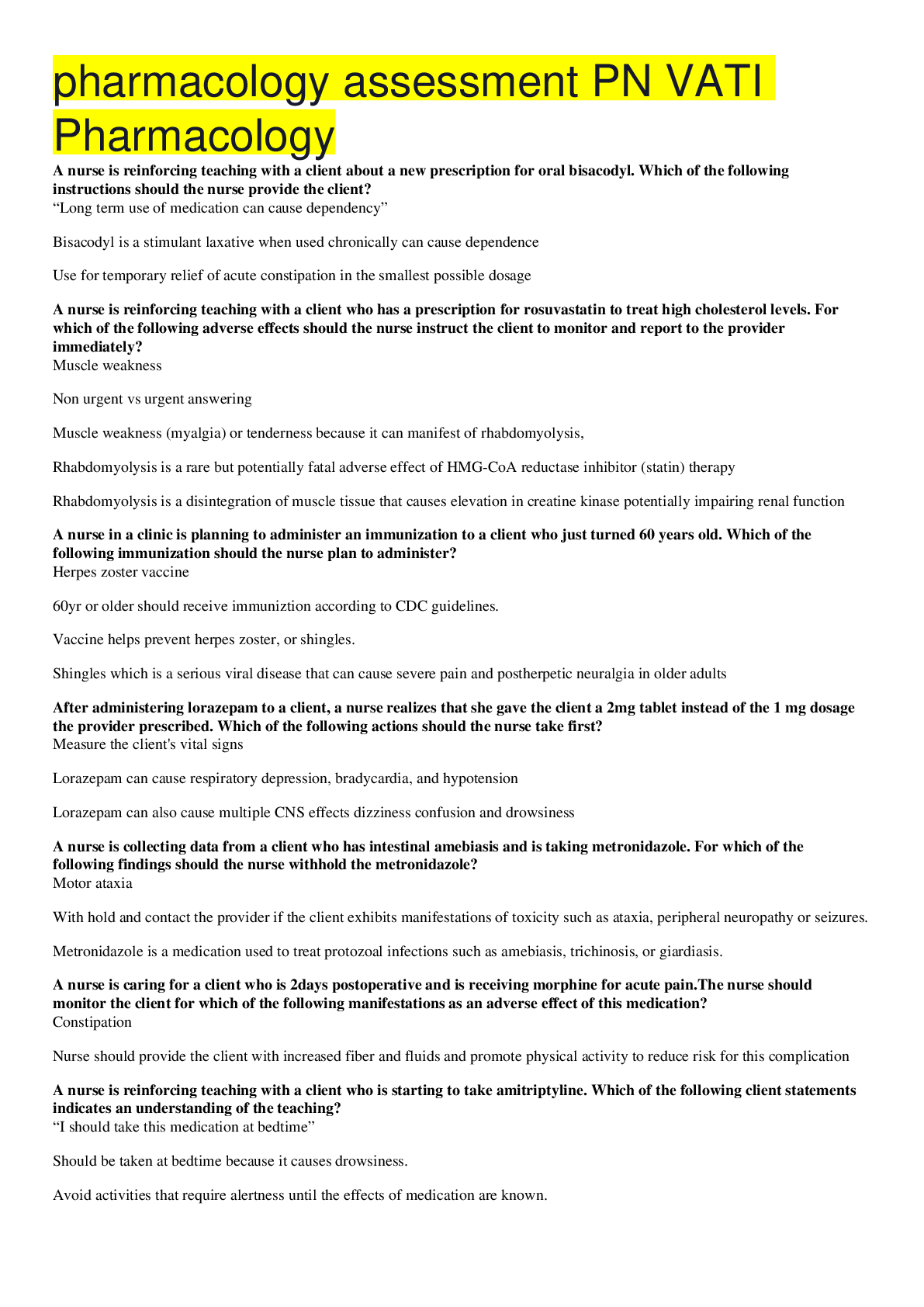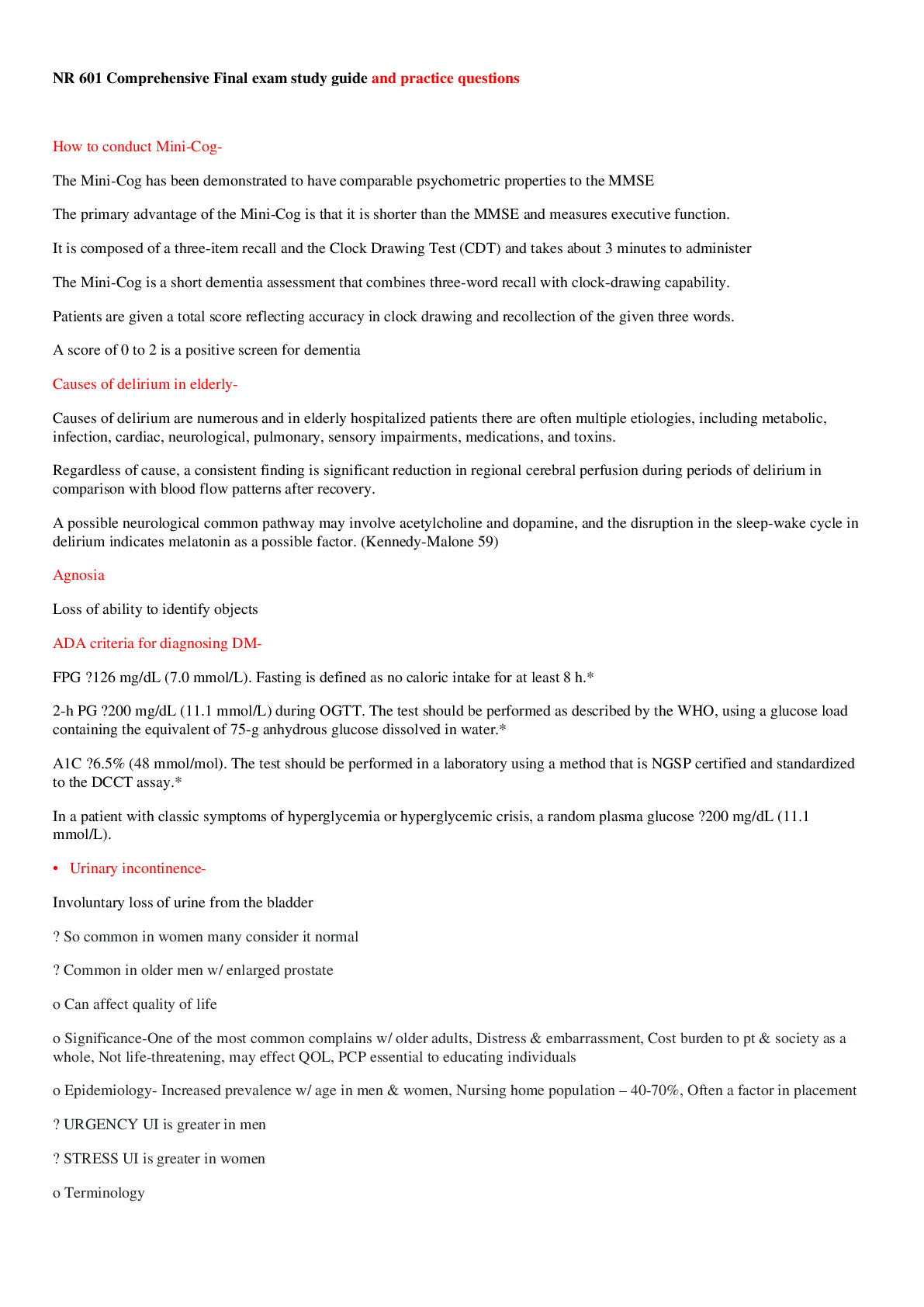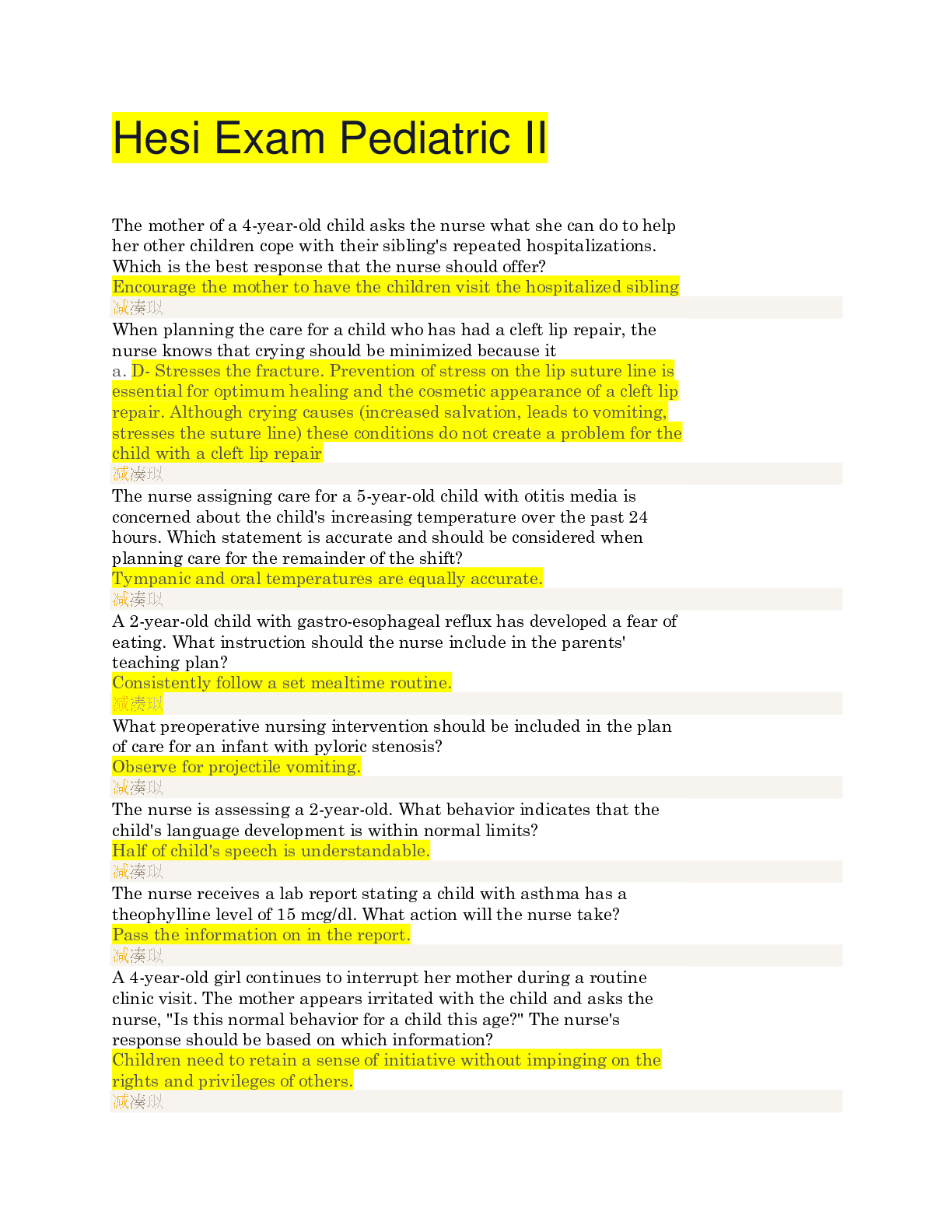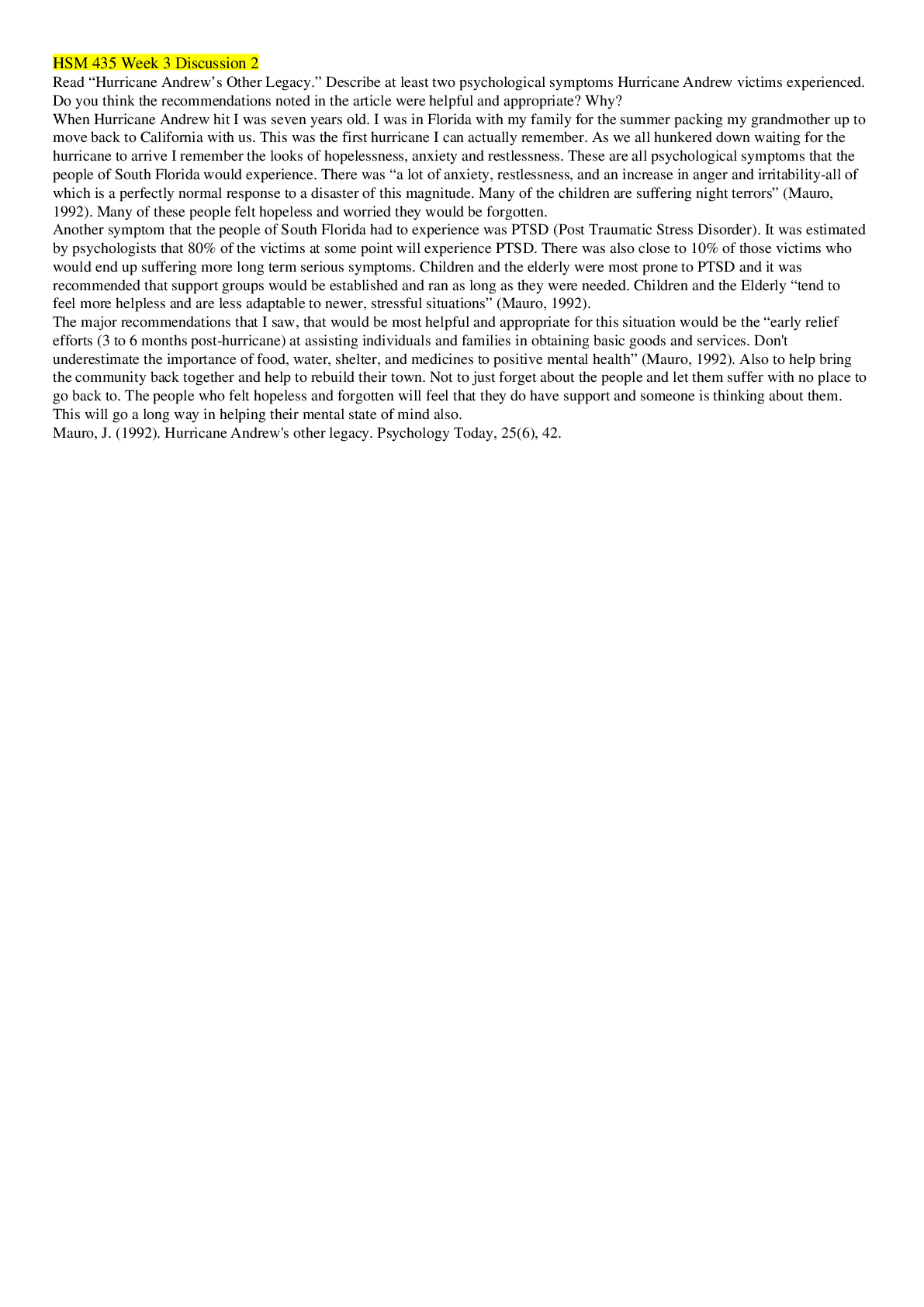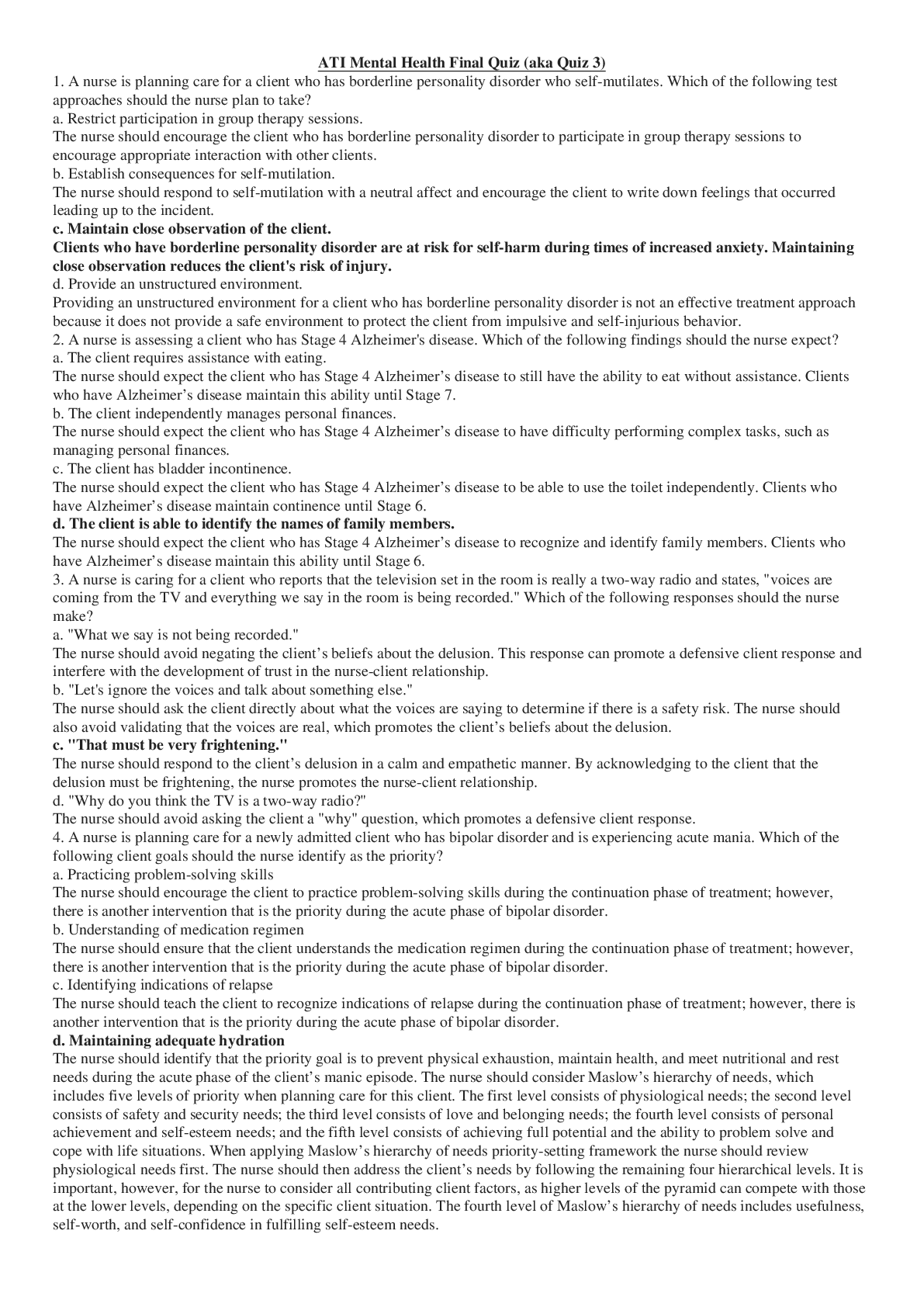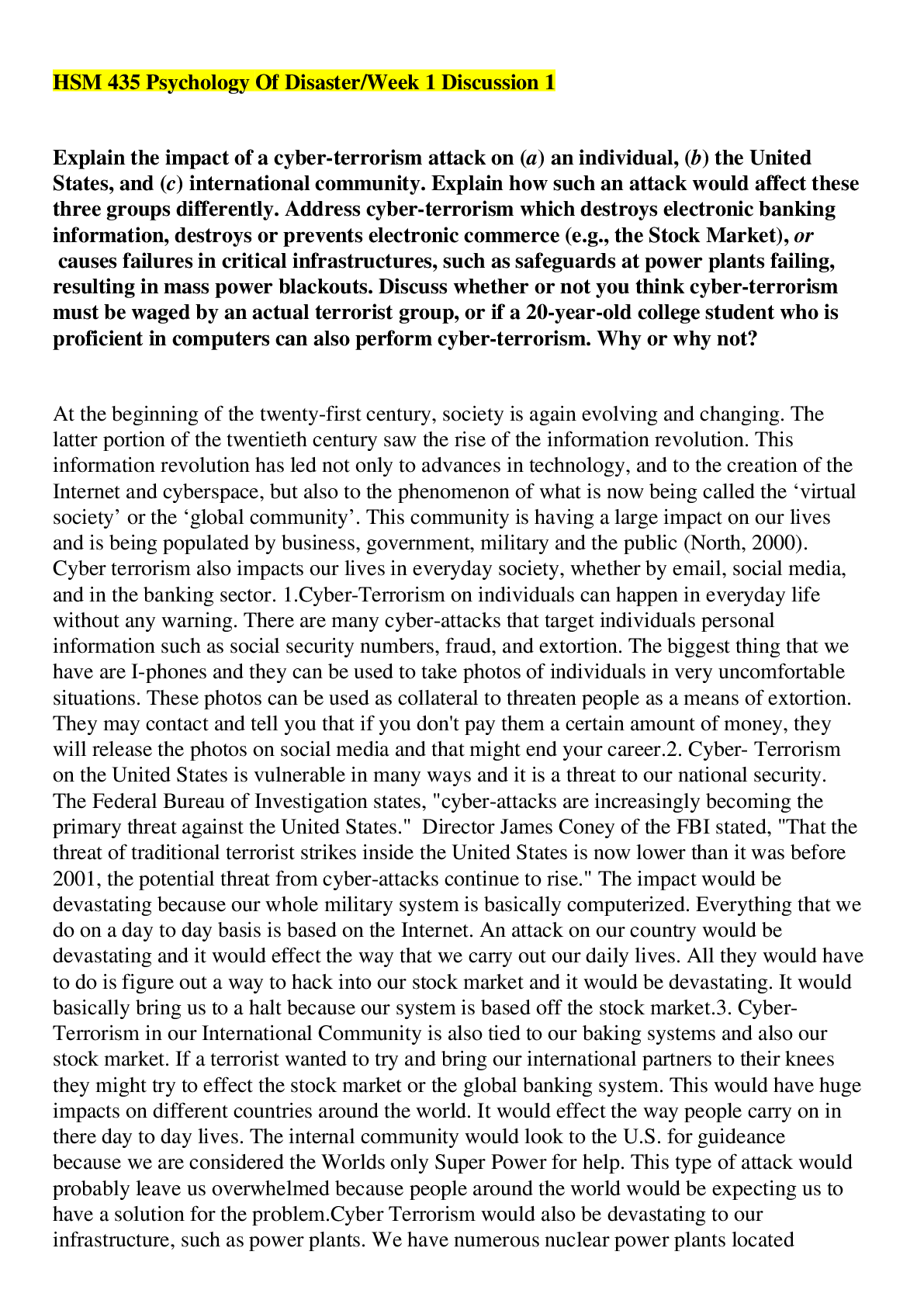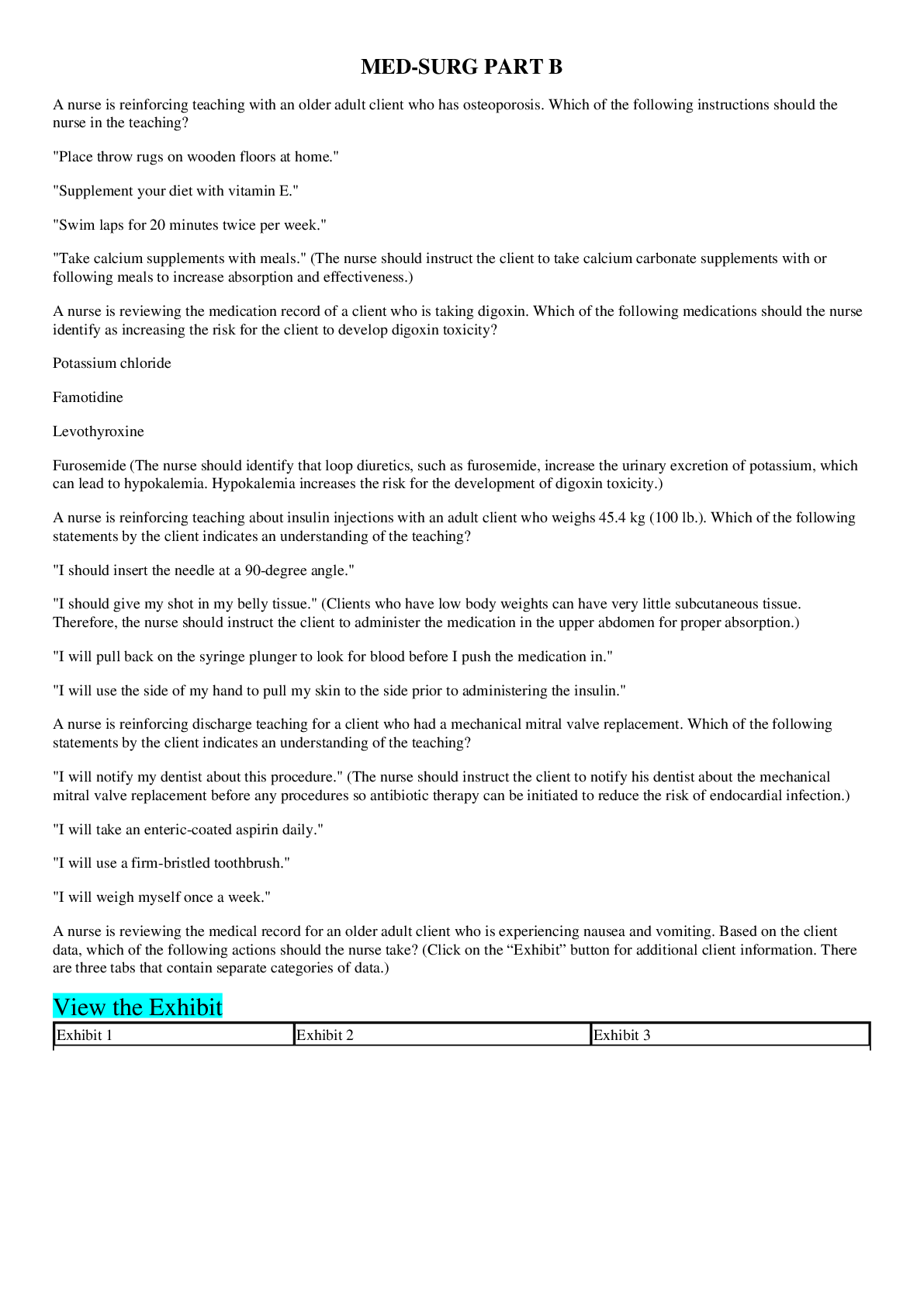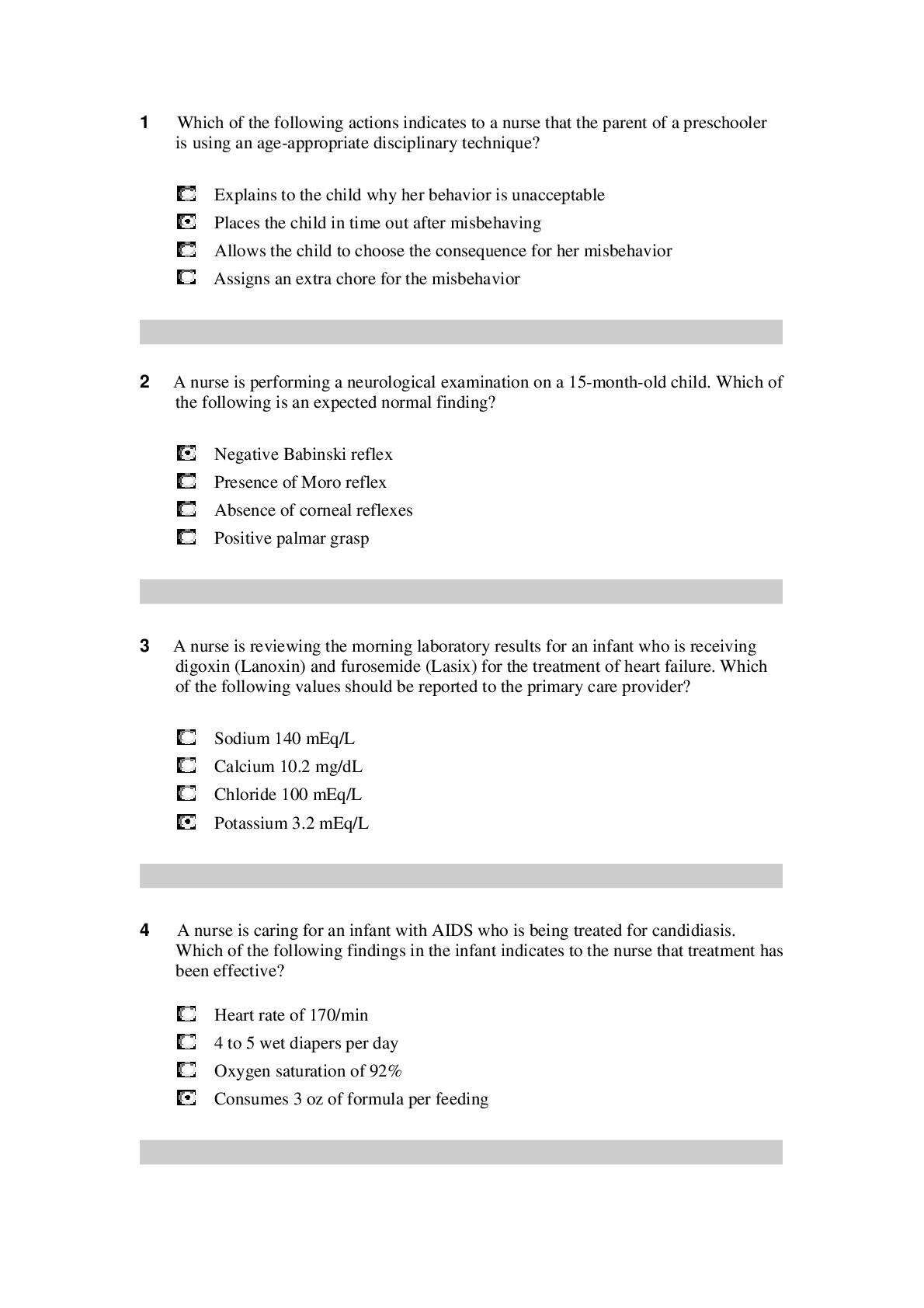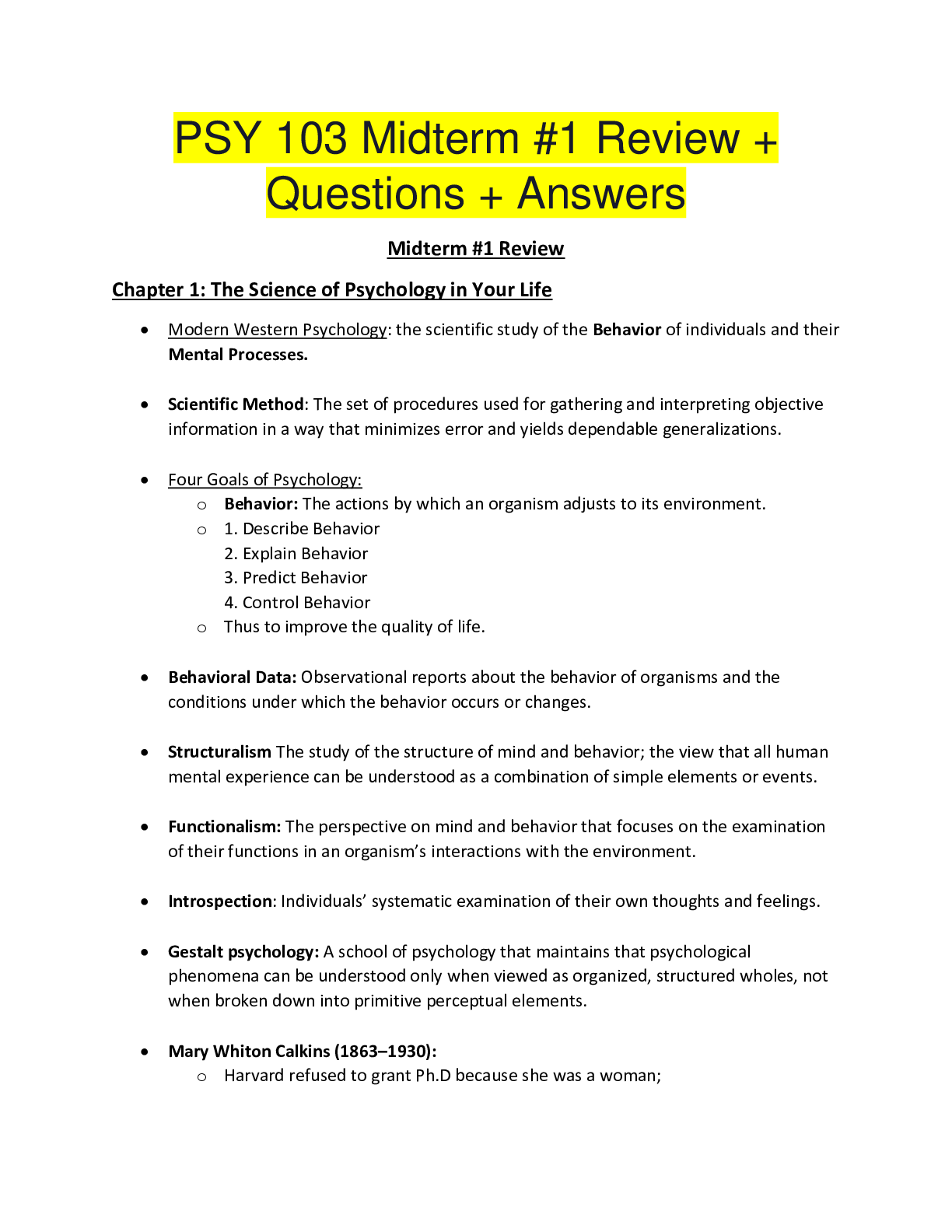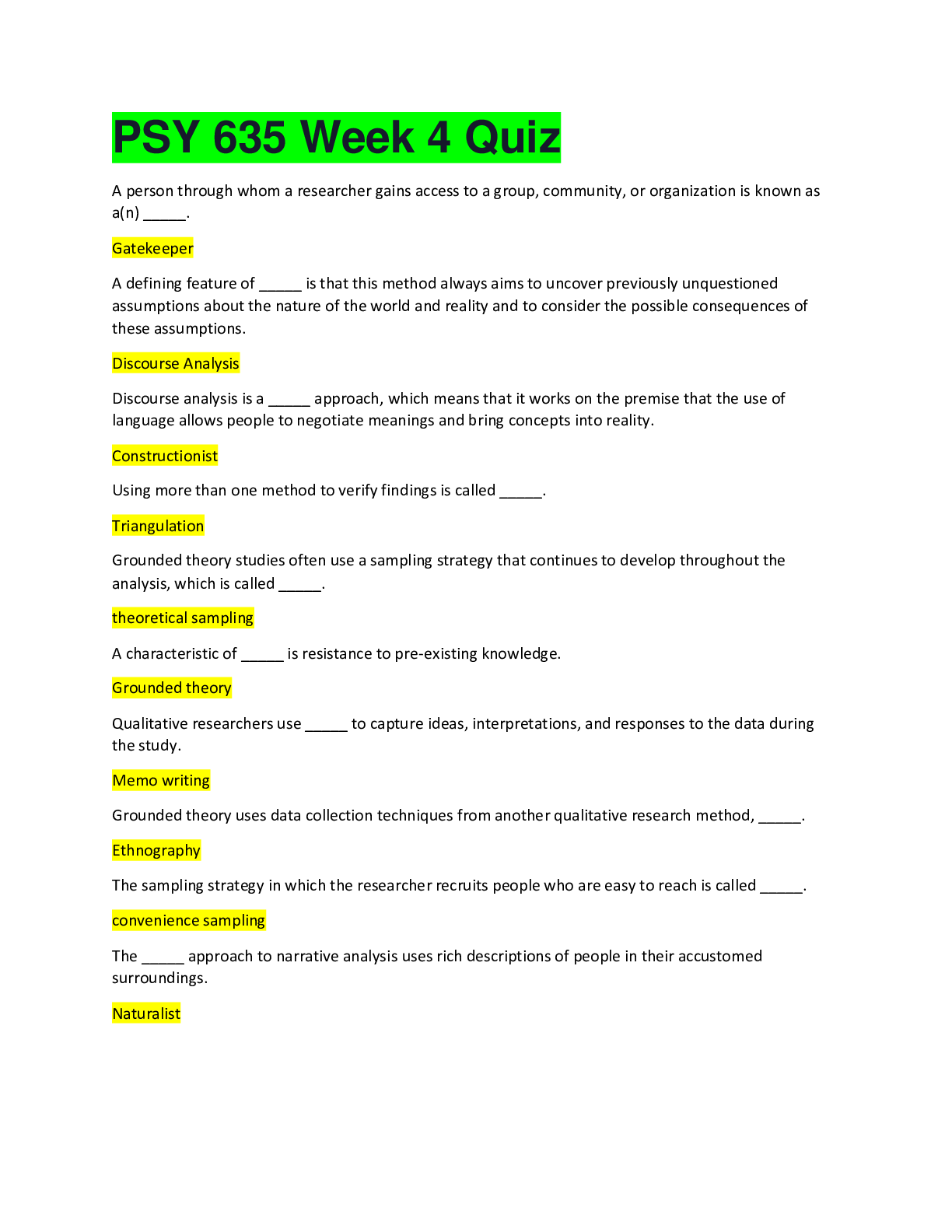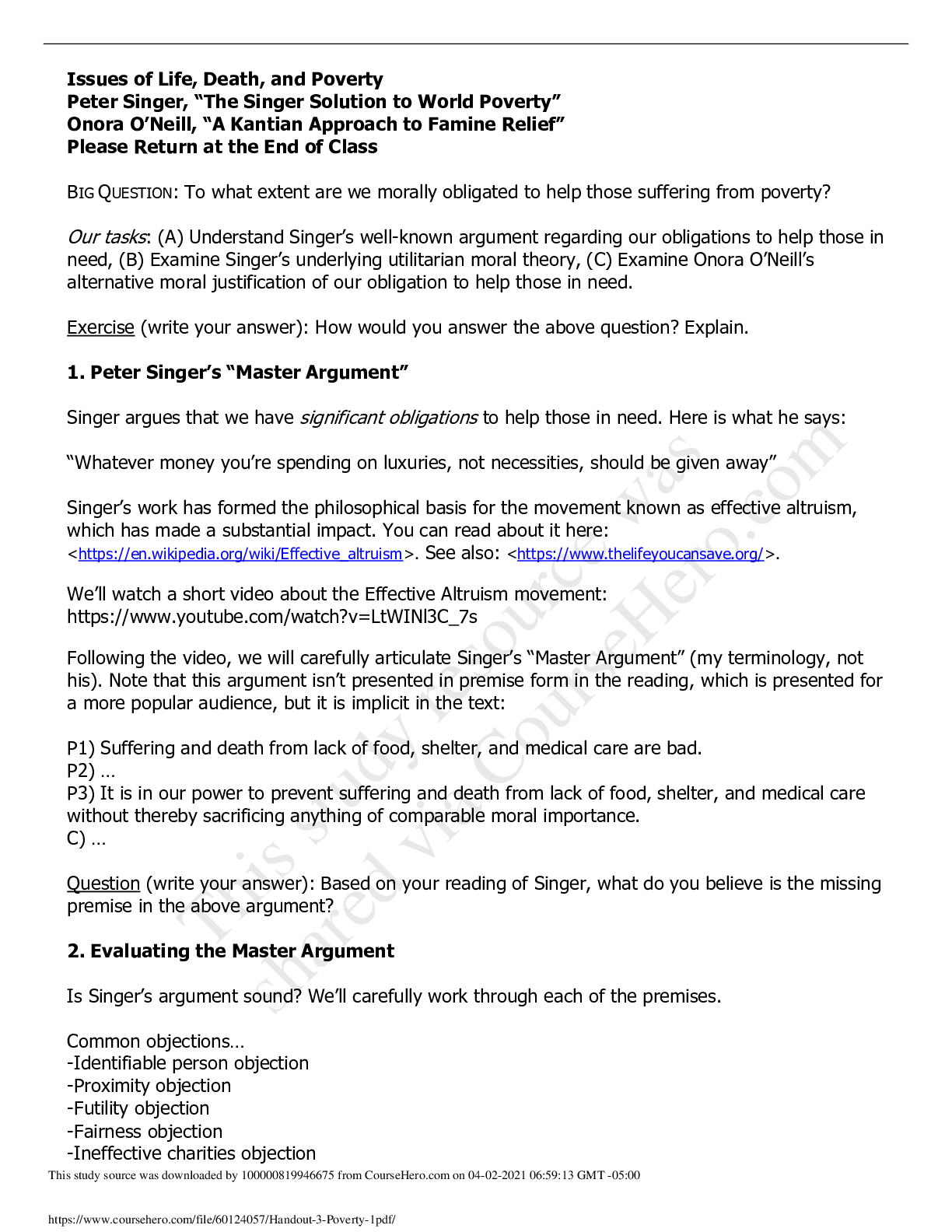Psychology > STUDY GUIDE > Grand Canyon University - PSY 402 Final Exam Study Guide: Already Graded A (All)
Grand Canyon University - PSY 402 Final Exam Study Guide: Already Graded A
Document Content and Description Below
PSY 402, Cognitive Neuroscience Study Guide for Final Exam Chapter 8: #1. Describe the function of effectors (distal and proximal), alpha motor neurons, gamma motor neurons, smooth muscles, striated m... uscles, and spinal interneurons. 2. Describe the function of extrapyramidal tracts, the cerebellum ( including vestibulo-, spino-, and neo-), and basal ganglia in helping us to move. Which part is most affected by alcohol intoxication? 3. Describe the cortical regions involved in motor control, including corticospinal tract, primary and secondary motor cortex, and association motor cortex. Include hemiplegia and apraxia (both ideomotor and ideational) in your answer. 7. Describe Cisek’s affordance competition hypothesis. 8. Describe the role of the supplementary motor area (SMA) and parietal motor areas (include alien hand syndrome and the repetition suppression effect in your answer). 10. How do the basal ganglia serve as a “gatekeeper”? Include Huntington’s disease, Parkinson’s disease, hypokinesia, bradykinesia, OCD, Tourette’s Syndrome, and autism in your answer. 12. Describe how people learn and perform new skills (include sensorimotor adaptation, prism adaptation, visuomotor tasks, forward models, and expertise in your answer). Chapter 9: 13. Distinguish the different types of memory: sensory, short-term, working and long-term (include declarative, episodic, semantic, nondeclarative, and procedural memory, as well as classical conditioning, priming, and habituation in your answer). (Hint: see Figure 9.2, p. 381.) 14. Where in the brain are those types of memories located? (Hint: see Figure 9.41, p. 421). 16. Distinguish between anterograde and retrograde amnesia (include Ribot’s Law). 17. Distinguish between proactive and retroactive interference. 18. Discuss the four components of Baddeley and Hitch’s model of working memory. 19. How does the medial temporal lobe affect learning and memory (include hippocampus, amygdala, delayed nonmatch-to-sample task, and contextual fear learning). 20. Distinguish the function of the perirhinal cortex with the posterior part of the parahippocampal cortex. 21. How does memory consolidation take place? Contrast the standard consolidation theory with multiple trace theory. Chapter 10: 23. Describe Plutchik’s eight basic categories of emotion. Distinguish complex emotions from basic ones. 25. Describe how the following parts of the brain play a role in emotions: limbic system, Papez circuit, amygdala, orbitofrontal cortex, insular cortex, hypothalamus, and anterior cingulate cortex. 26. Describe the differences among the following theories of emotion: James-Lange, Cannon-Bard, Singer-Schachter, Lazarus, constructivist approach, evolutionary approach, and LeDoux. 27. What is Kluver-Bucy Syndrome? 30. How does the orbitofrontal cortex affect decision-making, regret, and counterfactual thinking? 32. Contrast antecedent-focused and response-focused emotion regulation in Gross’s model. Chapter 11: 34. Define anomia, TOTP (or TOT), dysarthria, alexia, apraxia, and aphasia. 35. Discuss the differences among Broca’s aphasia, Wernicke’s aphasia, and conduction aphasia. 36. Define mental lexicon, phoneme (and phonology), morpheme (and morphology), semantics, syntax, grammar, pragmatics, prosody, lemma, and lexeme. 37. Contrast the N400 with the P560 and P600 responses. 39. Describe the three steps of Hagoort’s language model. 41. Describe the functions pf the ventral and dorsal pathways in Friederici’s model. 42. Define displacement and infinite generativity. Chapter 12: 44. How do the LPFC, FP, OFC, and the MFC affect cognitive control? 45. Define utilization behavior, action-outcome expectancy, habit, and perseveration. 46. What is the difference between crystallized and fluid intelligence? 47. Define object permanence (include the AB search error in your answer). 49. Describe the difference between a heuristic and an algorithm. 50. Describe the difference between primary and secondary reinforcers. 51. How does functional fixedness impair creativity and problem-solving? 52. Describe the difference between convergent and divergent thinking. Chapter 13: 56. Explain the origins and symptoms of autism (mindblindness), ASD, and schizophrenia. 58. Define default network and the sentinel hypothesis. 59. Describe the “abject failings of the lobotomy craze” (p. 565). 60. Define Theory of Mind, empathic accuracy, Simulation Theory, Theory Theory, and schadenfreude. 61. Describe how the right TPJ affects the FFA and the False-Belief Task. 63. Explain differences in how those with ASD and those without ASD function with regard to making inferences (include eye-gazing, imitation, and the grasping experiment in your answer). Chapter 14: 65. Define core consciousness, extended consciousness, and connection loops. 66. Distinguish dualism from monism/ materialism/ idea-ism/ idealism. 67. How is consciousness related to self-knowledge, access to information, and sentience (qualia)? 68. How do blindsight, subliminal perception, priming, “scaffolding the storage,” and the backward referral hypothesis provide evidence of the unconscious? 70. Use mirror self-recognition (MSR), imitation, and Theory of Mind to discuss whether some primates have a sense of consciousness. 71. Use determinism, chaos theory, quantum theory, emergence, and multiple realizability to discuss whether free will exists (include “weak emergence,” “strong emergence,” and personal responsibility in your answer). 73. Discuss the differences among retributive, utilitarian, and restorative justice. 74. Discuss how the problem of free riders can be dealt with in a cooperative society (include the emotional reactivity hypothesis in your answer). [Show More]
Last updated: 1 year ago
Preview 1 out of 6 pages
Instant download
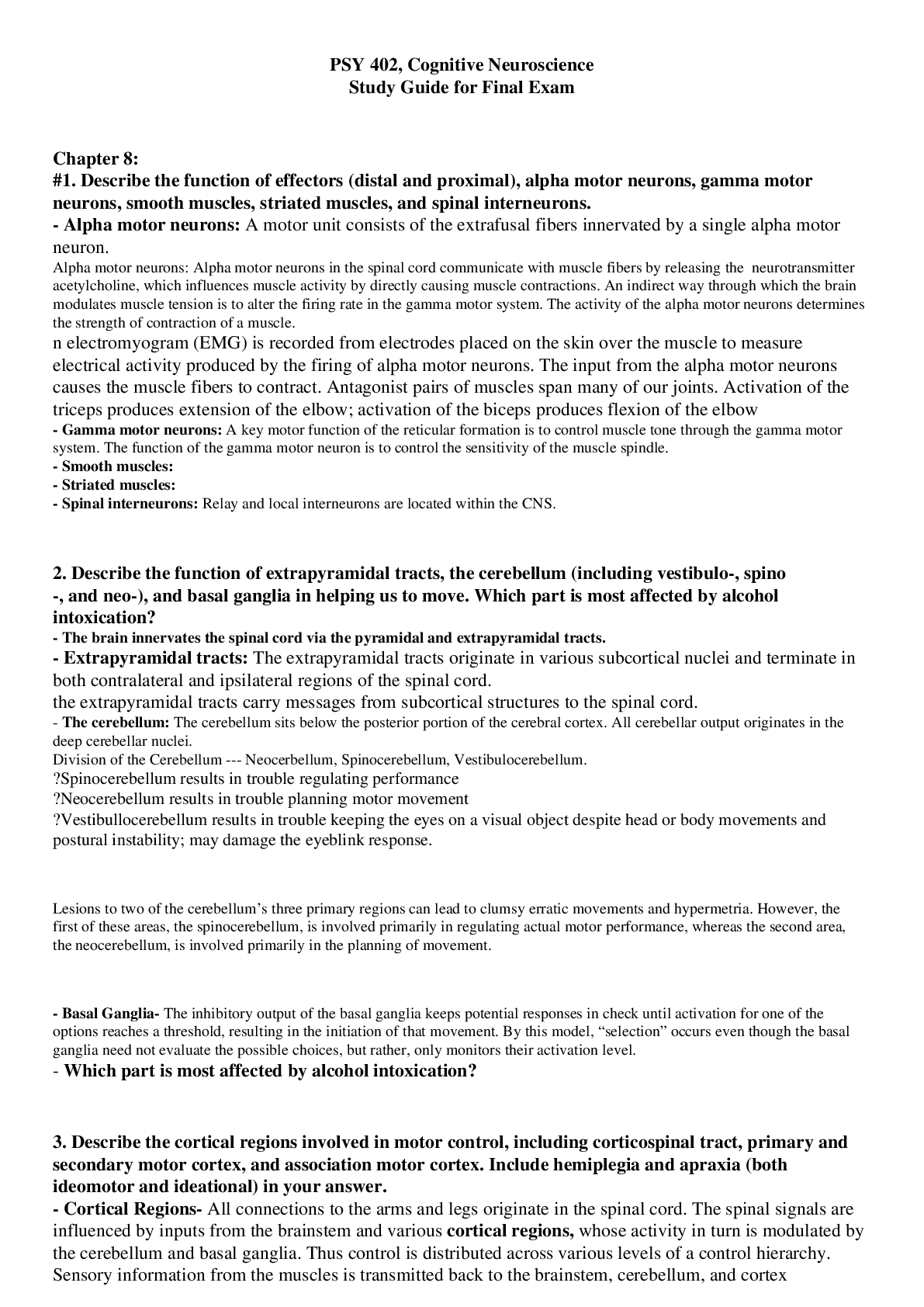
Buy this document to get the full access instantly
Instant Download Access after purchase
Add to cartInstant download
Reviews( 0 )
Document information
Connected school, study & course
About the document
Uploaded On
May 30, 2020
Number of pages
6
Written in
Additional information
This document has been written for:
Uploaded
May 30, 2020
Downloads
0
Views
127

